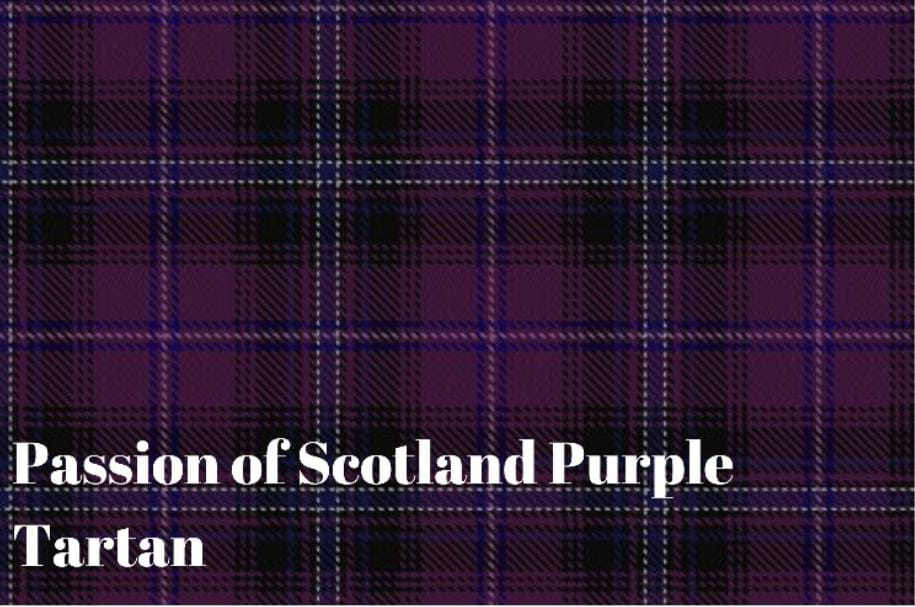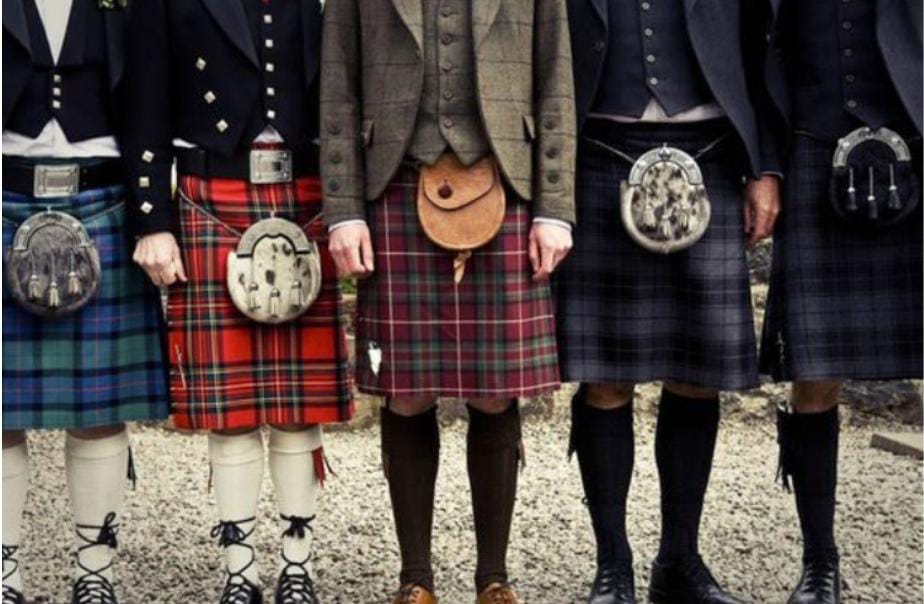In the ever-evolving world of fashion, traditional elements often experience a revival, blending the past with contemporary trends. One such phenomenon is the rising popularity of purple tartan in traditional Scottish clothing. Once reserved for the elite due to its rarity and the complexity of producing purple dye, this regal hue is now making a bold statement in modern tartan designs. From runways to cultural festivals, purple tartan is being embraced for its aesthetic appeal and rich symbolism, representing a unique intersection of heritage and innovation. This article delves into the factors behind the resurgence of purple tartan, exploring its historical roots, cultural significance, and the influence of modern fashion dynamics.

Historical Significance of Tartan
Tartan is a pattern consisting of crisscrossed horizontal and vertical bands in multiple colors. Originating in Scotland, it has been associated with Scottish clans, each having its unique tartan pattern. Traditionally, tartans were made from wool and were used for everything from clothing to blankets. The colors and patterns of tartan were originally determined by the natural dyes available in different regions. Tartans have been worn for centuries, often as a sign of clan identity and pride. The Dress Act of 1746, which banned the wearing of tartan, was an attempt by the British government to suppress Highland culture following the Jacobite uprising. When the ban was lifted in 1782, there was a resurgence in the wearing of tartan, symbolizing Scottish identity and resistance.
The Emergence of Purple Tartan
While traditional tartans often feature colors derived from natural dyes such as greens, blues, and browns, purple tartan has seen a rise in popularity recently. The use of purple in tartan is not entirely new; it has historical precedents, but its modern resurgence is noteworthy. Several factors contribute to this trend:
1. Symbolic Meaning:
Purple has long been associated with royalty, luxury, and power. Its historical rarity and the difficulty of producing purple dye made it a color reserved for the elite. Today, incorporating purple into tartan designs can convey a sense of prestige and elegance.
2. Modern Dyeing Techniques:
Advances in dyeing technology have made it easier and more cost-effective to produce vibrant and long-lasting purple fabrics. This technological progress has facilitated the creation of stunning purple tartans that were previously difficult to achieve.
3. Fashion Trends:
The fashion industry constantly evolves, and designers often seek to blend traditional elements with contemporary styles. Purple tartan represents a fusion of classic Scottish heritage with modern aesthetic sensibilities, appealing to a broad audience.
Cultural Relevance of Purple
In many cultures, purple is a color imbued with significant meaning. In Scotland, purple can symbolize a connection to nature, as the heather-covered moors often bloom in shades of purple. This natural association makes purple a fitting choice for tartan designs, as it reflects the Scottish landscape and environment. Moreover, purple is often associated with creativity, mystery, and spirituality. By incorporating purple into tartan, designers and wearers can express these deeper meanings, adding layers of significance to their clothing choices.
Influence of Celebrities and Media
Celebrities and media have a profound impact on fashion trends. The popularity of purple tartan has been bolstered by high-profile figures and fashion influencers who have embraced the color in their wardrobes. When celebrities are seen wearing purple tartan, it quickly gains attention and admiration from the public. Additionally, media representations of Scottish culture, whether in movies, television shows, or fashion magazines, often highlight tartan as a quintessential element. By featuring purple tartan in these representations, media helps to popularize and legitimize the trend.
Traditional Scottish Clothing

Kilts, made from woolen fabric, are perhaps the most iconic piece of traditional Scottish attire, often worn with sporrans (pouches) and ghillie brogues (shoes). Each tartan pattern represents a specific Scottish clan, showcasing the wearer’s heritage and familial pride. Traditional Scottish clothing is rich in history and symbolism, characterized by distinct garments such as kilts, sporrans, and tartans. Accompanying these garments, accessories like the sgian-dubh (a small dagger) and the fly plaid (a draped piece of tartan) add to the ensemble’s authenticity and cultural significance. Traditional Scottish clothing is not only a celebration of Scotland’s rich cultural heritage but also a statement of identity and continuity, passed down through generations.
Design Versatility and Appeal
Purple tartan offers a versatile palette for designers, allowing for a wide range of creative expressions. The combination of purple with traditional tartan patterns creates a striking contrast that can be both eye-catching and sophisticated. This versatility makes purple tartan suitable for various occasions, from casual wear to formal events. Moreover, purple tartan can be easily incorporated into different types of clothing and accessories. From kilts and dresses to scarves and ties, the adaptability of purple tartan ensures its place in contemporary fashion.
The Role of Scottish Diaspora
The Scottish diaspora, spread across the globe, plays a significant role in the resurgence of tartan. Many people of Scottish descent proudly wear tartan as a way to connect with their heritage and celebrate their roots. The adoption of purple tartan by the diaspora community helps to spread its popularity internationally. Cultural festivals, gatherings, and events organized by the Scottish diaspora often feature traditional clothing, including tartans. The inclusion of purple tartan in these events showcases its growing acceptance and appreciation within the global Scottish community.
Conclusion
The rising popularity of purple tartan in traditional Scottish clothing is a fascinating blend of historical significance, cultural symbolism, and modern fashion trends. Its regal connotations, enhanced by advancements in dyeing technology, make it a compelling choice for those seeking to express both heritage and contemporary style. Influenced by celebrities, media, and the Scottish diaspora, purple tartan has carved out a unique niche in the world of fashion, embodying a rich tapestry of tradition and innovation.
FAQs
1. What is the significance of tartan in traditional Scottish clothing?
Tartan is a patterned cloth consisting of crisscrossed horizontal and vertical bands in multiple colors, traditionally made from wool. Each tartan design is associated with a specific Scottish clan, symbolizing the wearer’s family heritage and clan identity. Tartans are an essential element of traditional Scottish clothing, reflecting Scotland’s rich cultural history.
2. Why is purple tartan gaining popularity in recent years?
Purple tartan is becoming popular due to several factors, including its association with royalty and luxury, advances in dyeing technology that make vibrant purple hues more accessible, and the influence of modern fashion trends that blend traditional elements with contemporary styles. Additionally, the symbolic meanings of purple, such as creativity and spirituality, contribute to its appeal.
3. How does modern dyeing technology impact the production of purple tartan?
Modern dyeing technology has significantly improved the production of purple tartan by making it easier to achieve vibrant and long-lasting colors. These advancements allow designers to create stunning purple tartan fabrics that were previously difficult to produce, broadening the range of available hues and enhancing the overall quality of the textiles.
4. What role do celebrities and media play in the popularity of purple tartan?
Celebrities and media have a substantial impact on fashion trends, including the popularity of purple tartan. When high-profile figures and fashion influencers incorporate purple tartan into their wardrobes, it garners public attention and admiration. Media representations of Scottish culture in movies, TV shows, and fashion magazines also highlight tartan, further promoting its appeal.
5. How does the Scottish diaspora contribute to the resurgence of purple tartan?
The Scottish diaspora, spread across the globe, helps to popularize purple tartan by proudly wearing it as a symbol of their heritage and identity. Cultural festivals, gatherings, and events organized by the Scottish diaspora often feature traditional clothing, including tartans. The inclusion of purple tartan in these events showcases its growing acceptance and appreciation within the global Scottish community.

